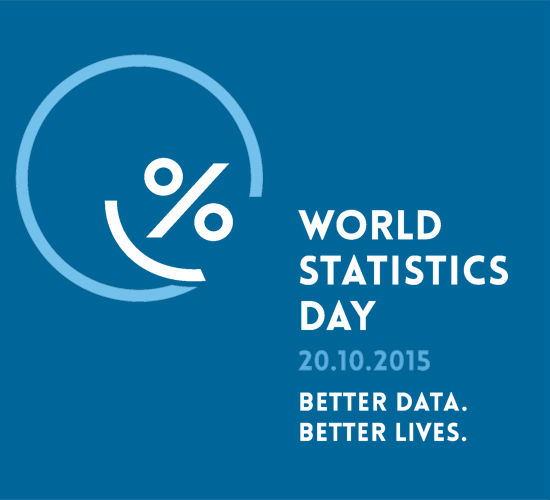Avaluar l’impacte i l’eficiència de la despesa pública
AVALUACIÓ DE POLÍTIQUES PÚBLIQUES
Quantificació dels impactes econòmics i socials de les diferents polítiques públiques:
- Impactes sobre la producció sectorial, la creació de renda i la creació d'ocupació.
- Impactes ambientals.
19 d'octubre del 2017: Elisenda Paluzie i Joan Manuel Tresserras presenten el número 29 de la revista Eines. La revista, titulada ‘La globalització i la crisi de la democràcia’, descriu les tensions que es generen en les societats democràtiques sobretot en els àmbits polític, econòmic i comunicatiu, així com les conseqüències del món global en la democràcia. A banda del diagnòstic, també s’esmenta com fer front als efectes que pot generar la globalització. Vegeu la notícia aquí. Podeu accedir al PDF de la publicació pitjant aquí.
L’eficient provisió de serveis públics permet la consecució dels objectius públics amb menys recursos o l’assoliment d’un major impacte amb els mateixos inputs. L’eficiència de polítiques publiques educatives, sanitàries, laborals, redistributives, d’infraestructures i altres, es pot analitzar mitjançant una aproximació basada en un procés en dues etapes:
Una primera etapa on s'avalua l'eficiència d'una determinada política pública a través de la metodologia DEA (Data Envelopment Analysis), que és un enfocament no paramètric que requereix de la prèvia definició d'objectius (outputs) i instruments (inputs), i permet avaluar l'eficiència de la política pública objecte d'anàlisi comparant-ho amb el cas d'altres CCAA, països o regions.
Una segona etapa que permet identificar els factors determinants que expliquin l’eficiència de la política pública analitzada, i per tant permeten posar de relleu sobre quins factors caldria actuar per tal de millorar els resultats (d'eficiència d'una determinada acció finançada amb recursos públics).
AVALUACIÓ SECTORIAL
Ignasi Puig i Jordi Roca Jusmet (coord.), Marta Jofra i Jaume Freire (2013) "Balanç econòmic de la recollida de residus porta a porta i en àrea de vorera per als ens locals i propostes d'optimització". Associació de Municipis Porta a Porta finançat per l’Agència de Residus de Catalunya.
Vicent Alcántara, Emilio Padilla, Jordi Roca Jusmet “Consum final d’energia” i “Emissions de gasos amb efecte d’hivernacle derivades del consum d’energia” a Ramos Martín, J. (coord) (2009) "Ús de l’energia a Catalunya. Anàlisi del Metabolisme Energètic de l'Economia Catalana". Consell Assessor per al Desenvolupament Sostenible (CADS), Generalitat de Catalunya.
Jordi Roca Jusmet (coord.), (2007) "Fiscalitat i canvi climàtic”, Departament de Medi Ambient i Habitatge de la Generalitat de Catalunya, 2007.
Enric Tello, coord. (2007) "Taula Tècnica d’estalvi d’aigua del Segon Conveni ACA - FNCA" Informe final de la taula d'experts en disseny de polítiques d'estalvi d'aigua.
Jordi Roca Jusmet, Enric Tello, Emilio Padilla, “Ahorro de agua y tarifas domésticas” en Antonio Estevan y Narcís Prat, coords. (2006), Alternativas para la gestión del agua en Cataluña. Una visión desde la nueva cultura del agua, Bilbao, Bakeaz. Informe de l’estudi encarregat per conveni entre Departament de Medi Ambient de la Generalitat de Catalunya i la Fundació Nova Cultura de l’Aigua. Accés al llibre de pagament.
Jordi Roca Jusmet i Mònica Serrano (2005) "El Compte satèl·lit de l’aigua a Catalunya". Departament de Territori di Sostenibilitat de la Generalitat de Catalunya/Institut d’Estadística de Catalunya.
Jordi Roca Jusmet, Enric Tello, Ignasi Puig (2004) "Avaluació de les experiències autonòmiques de tributació sobre activitats que incideixen negativament sobre el medi ambient i exploració inicial de les possibilitats a Catalunya". Departament de Medi Ambient i Habitatge de la Generalitat de Catalunya. Document confidencial. Jordi Roca Jusmet, investigador principal.
Jordi Roca Jusmet, Ignasi Puig, M. Hercowitz, O. Hernández (2003) Fiscalidad y Medioambiente en la isla de Lanzarote, Programa Life de la Unión Europea, Cabildo de Lanzarote. Accés al resum del llibre publicat. Resum: els costos privats i els preus hauran de reflectir de forma creixent els costos ambientals associats a les diferents activitats econòmiques.
Toni Mora, Josep Oriol Escardíbul (2016) "Impacte del programa eduCAT en l’adquisició de competències de l’alumnat de secundària de Catalunya" Universitat Internacional de Catalunya. ISBN: 978-84-15003-65-6
Álvaro Choi, María Gil, Mauro Mediavilla i Javier Valbuena (2015) "Double toil and trouble: grade retention and academic performance in Spain" XXIV Jornadas de la Asociación de Economía de la Educación Madrid, España, 25-26 Junio 2015. Abstract: Grade retention is widely applied in the Spanish educational system, where almost 1 out of every 3 students have repeated at least one course by age 16. In that sense, Spain can be classified among those countries with a comprehensive educational system, where grade retention is applied as the main policy for levelling the performance of students. However, part of the variation in the rates of grade retention at an international level may also be explained by social believes and cultural factors. Several arguments are used for defending the use of grade retention. First, it provides students some extra time for maturing; second, it is a policy which is applied equally to all students; third, it may be a deterrent to low performance; finally, it may enhance overall performance as it transmits students a culture of effort. Those who stand against grade retention emphasize its inefficacy, its high cost and its negative impact on the student’s level of motivation, and may also generate discipline issues in schools. However, while most of the empirical evidence available for other countries shows the scarce effectiveness of grade retention for enhancing academic performance, this exercise is still to be performed for Spain. Most studies analysing the Spanish case cannot estimate precisely the effect of grade retention on academic achievement due to the lack of data rich enough for tackling methodological issues such as reverse causation. In this paper we attempt to overcome this limitation creating a pseudo-panel which combines microdata from PIRLS-2006 and PISA-2012. Our study provides evidence about the negative impact of grade retention and the importance of previous achievement. Therefore, this study underlines the importance of early intervention at primary school or even before, in order to identify students at risk of grade retention.
Sergi Giménez-Martín, Judith Vall, Elena del Rey, (2015) "The effect of changes to the statutory minimum working age on educational, labor and health outcomes" IZA Discussion Paper No. 9092. Abstract: We explore the effects of a labor market reform that changed the statutory minimum working age in Spain in 1980. In particular, the reform raised the statutory minimum working age from 14 to 16, while the minimum age for attaining compulsory education remained at 14 until 1990. To study the effects of this change on the incentives to work or study, we consider the different alternatives available at age 14 to individuals born at various times of the year before and after the reform. Individuals born at the beginning of the year were legally able to work before finishing compulsory education preceding the reform. We show that individuals born at the beginning of the year were more likely to finish both compulsory and post-compulsory education if they turned 14 after the reform. In addition, we find that the reform decreased mortality at young ages (16- 25) for both genders, and increased it for prime-age women (26-40). We provide evidence to prove that the latter increase is partly explained by the deterioration of the health habits of the affected women. This helps explain the narrowing age gap in life expectancy between women and men in Spain.
Reinhilde Veugelers i Elena Del Rey (2014) "The contribution of universities to innovation, (regional) growth and employment" Economics of Education in Europe - Analytical Report No. 18. Executive summary: The main objective of this study is to provide a review of the literature and evidence on the contributions of universities to innovation and employment. While teaching and research are the first and second stream of activities of universities, a third stream of activities is the contribution of universities to society by transferring their know-how. This third stream of activities builds upon the first and second, but it is increasingly being seen as important and distinctive in its own right, deserving of specific policies and resources to ensure their effective functioning. This line of activities is the main subject of this report: are European universities, through their third stream of activities, able to match society’s expectations as engines of innovative growth and achieve their full potential, without jeopardizing their main mission of educating and basic research?
Jabier Valbuena (2012) "A Longitudinal Perspective on Higher Education Participation in the UK"School of Economics Discussion Paper 12/15, School of Economics, University of Kent. Abstract: This paper is based on the first seven waves of the Longitudinal Study of Young People in England (LSYPE) that allow us to follow a recent cohort of pupils from age 14 right through to Higher Education (HE) participation at age 19/20. Therefore, our approach involves using rich individual data that have been linked to school level information and geographic markers to examine some of the factors determining HE participation for individuals who were in Year 11 in 2005/06 and who could therefore first enter HE in 2008/2009. Our results indicate that differences in HE participation (including studying a science degree and attending prestigious universities) between students coming from advantaged and disadvantage backgrounds are large and that much of the socio-economic gap in HE participation rates is driven by particularly low participation rates for students at the bottom of the income distribution. However, when we introduce controls for prior educational attainment, student’s expectations towards university, academic results during secondary schooling and type of school attended these gaps in participation are substantially reduced. Our analysis suggests that one of the main challenges to widening participation for pupils from poorer socio-economic backgrounds is early policy interventions at, say, age 11 as they are likely to have an important effect in HE participation. Also, relatively later intervention (at ages 14 to 16) aiming at improving educational aspirations of teenagers and targeting better GCSEs results will further close the gap.
William J. Collier, Yu Zhu i Javier Valbuena (2011) What Determines Post-Compulsory Educational Choice? Evidence from the Longitudinal Survey of Young People in England. Discussion paper. University of Kent, Canterbury. Abstract: Using a unique dataset which is rich in both family background and attainment in education, we find that educational attainments at the end of the compulsory schooling stage are powerful predictors for post-compulsory educational choices in England. In particular, the single academic success indicator of achieving the Government’s gold standard in GCSE, is able to explain around 30% of the variation in the proportion of young people studying for academic qualifications. Instrumental-variables estimation which exploits variations in birth weight and school starting age suggest that over half of the least-squares effect of achieving the gold standard in GCSEs on studying for academic qualifications is due to individual heterogeneity (ability bias) or simultaneity bias (reverse causation). Nonetheless, conditional on the young person working towards a higher-level qualification, we find strong evidence of a highly significant causal effect of achieving the gold standard when choosing between the academic or vocational pathway.
Javier Valbuena (2011) "Family Background, Gender and Cohort Effects on Schooling Decisions", School of Economics Discussion Paper 11/14, University of Kent. Abstract: In this paper we use unique retrospective family background data from Wave 13 of the British Household Panel Survey (BHPS) on different birth cohorts to analyze the relevance of family background, in particular parental education, and gender on differential educational achievement. We find parents’ education attainments to be strong predictors of the education of their offspring. In particular, maternal education is the main determinant on the decision of whether stay-on beyond compulsory education. Our results are robust to the inclusion of a large set of control variables, including household income. A second research question addressed in the paper investigates whether the large expansion of the UK educational system during the last decades has concurred with enhanced relative educational opportunities for children of parents with low educational background. The analysis reveals that the relevance of parental education over time becomes stronger in terms of achieving higher educational levels, in particular university degree. However, there are significant dissimilarities with respect to gender differences; in particular we observe a positive secular trend in female education attainment associated to maternal education.
Matthew Hill, Jose Silva, Judit Vall (2015). "Act Now: The Effects of the 2008 Spanish Disability Reform". University of Kent, School of Economics Discussion Papers. Abstract: We evaluate the effects of a reduction in the generosity of the Spanish disability system (DI) implemented in 2008. The reform reduced the benefits for individuals that have a short contributory history relative to their age, theoretically discouraging potential applicants to disability. However, due to the method used to calculate the extent of lost benefits, the reform actually introduced an incentive for individuals to apply for disability now. We use a life-cycle model with heterogeneous disabled workers to understand the potential impact of the reform and confirm the predictions of the model empirically. Our estimates show that the reform increased the probability of applying to DI by 33% for men. Consistent with the theoretical model, the effect is much stronger for individuals that lost their job in the previous period (83%).
Judit Vall (2015) "Promoting employment of disabled women in Spain; Evaluating a policy" Labour Economics 19 (2012) 82–91. Abstract: Even though the Disability System in Spain is designed to allow partially disabled individuals to combine the receipt of the benefits with a job, their employment rates have remained very low since 1996. The aim of this paper is to evaluate the results of an employment promotion policy introduced in Spain in 2004 which increased the deductions to the Social Security contributions paid by employers that hired disabled women. We apply difference-in-difference models and estimate a recursive bivariate probit model to evaluate the existence of shifts in employment trends in the women relative to the men sample conditioning on the existence of preexisting trends. We find that the impact of the policy is significant and we estimate an average elasticity of employment of 0.14 for partially and of 0.08 for totally disabled women relative to the deductions in the employer Social Security contributions. Finally, when we extrapolate the results beyond our sample, we estimate that 7100 disabled women were able to find a job in Spain due to the policy with an associated cost of 10,997.900 euro for the government.
Judit Vall, Olivier Marie (2012) "Measuring the (income) effect of disability insurance generosity on labour market participation" Journal of Public Economics 96 (2012) 198–210. Abstract: We analyze the employment effect of a law that provides for a 36% increase in the generosity of disability insurance (DI) for claimants who are, as a result of their lack of skills and of the labour market conditions they face, deemed unlikely to find a job. The selection process for treatment is therefore conditional on having a low probability of employment, making evaluation of its effect intrinsically difficult. We exploit the fact that the benefit increase is only available to individuals aged 55 or older, estimating its impact using a regression discontinuity approach. Our first results indicate a large drop in employment for disabled individuals who receive the increase in the benefit. Testing for the linearity of covariates around the eligibility age threshold reveals that the age at which individuals start claiming DI is not continuous: the benefit increase appears to accelerate the entry rate of individuals aged 55 or over. We obtain new estimates excluding this group of claimants, and find that the policy decreases the employment probability by 8%. We conclude that the observed DI generosity elasticity of 0.22 on labour market participation is mostly due to income effects since benefit receipt is not work contingent in the system studied.
Andreas Kyriacou, Leonel Muinelo, Oriol Roca-Sagalés. (2015). On the redistributive efficiency of fiscal policy. MPRA working paper 63276. Abstract: This article analyses the redistributive efficiency of public spending and taxation in a panel of both advanced and developing economies during the last three decades (1984-2012). In order to explore how redistribution is achieved through fiscal policies, a two-stage approach is applied. First, we evaluate the redistributive efficiency of public spending and taxes by using Data Envelopment Analysis (DEA) and obtain considerable variation in redistributive efficiency scores across countries. Second, we use panel truncated and OLS regression analysis to identify the determinants of these differences and reveal the crucial role of economic development, government quality and demographic factors.
Isabel Busom, Beatriz Corchuelo, Ester Martínez-Ros (2015) "Tax incentives… or subsidies for business R&D?" Small Business Economics , Volume 43, Issue 3, pp 571-596. Abstract: We study whether firms’ actual use of R&D subsidies and tax incentives is correlated with financing constraints -internal and external- and appropriability difficulties and investigate whether both tools are substitutes. We compare the use of both policies by SMEs and by large firms and find significant differences both across instruments and across firm size. For SMEs, financing constraints are negatively correlated with the use of tax of credits, while they are positively associated with the likelihood of receiving a subsidy. The use of legal methods to protect intellectual property is positively correlated with the probability of using tax incentives, but not with the use of subsidies. For large firms external financing constraints are correlated with instrument use, but results regarding appropriability are ambiguous. Our findings suggest that (1) direct funding and tax credits are not perfect substitutes in terms of their ability to reach firms experiencing barriers associated to market failures; (2) one size may not fit all in innovation policy when the type or intensity of market failure differs across firm size, and (3) subsidies may be better suited than tax credits to encourage firms, especially young knowledge-based firms, to start doing R&D.
Cristina Carrasco Bengoa, Mònica Serrano Gutiérrez (2006) "Compte satèl·lit de la producció domèstica (CSPD) de les llars de Catalunya 2001" Col·lecció 'Estudis' de l'Institut Català de les Dones, número 1. Resum: La Generalitat analitzà per primera vegada el valor econòmic de l'activitat relacionada a les tasques domèstiques. El PIB català augmentaria un 40% si es remunerés el treball familiar domèstic. Les fonts d’informació bàsica han estat l’Enquesta de l’Ús del Temps (EUT) 2002-2003 realitzada per l’Idescat i l’INE, i l’Enquesta de l’estructura salarial 2002, elaborada per l’INE, així com la Taula Input-Output de Catalunya 2001 de l’Institut d’Estadística de Catalunya. Aquesta darrera eina estadística proporciona una anàlisi coherent i molt detallada del conjunt de relacions econòmiques que tenen lloc entre tots els sectors de l’activitat econòmica. Gràcies a aquesta informació, és possible desenvolupar treballs com els comptes satèl·lit, que permeten estudiar sectors econòmics que, per la seva transversalitat o peculiaritat no tenen un reflex clar en les estadístiques tradicionals.
1. Impacte econòmic del desmantellament de Vandellòs I (ENRESA). Maria Llop, investigadora principal. Document Confidencial.
2. Impacte econòmic de la construcció del Museu Gaudí de Reus (Ajuntament de Reus). Josep Maria Arauzo, Investigador Principal, Document confidencial.
3. Impacte econòmic del Port de Tarragona (Autoritat Portuària de Tarragona). Maria Llop, investigadora principal. Document Confidencial.
4. Impacte econòmic d'ANAV a Catalunya (ANAV). Maria Llop, investigadora principal. Document Confidencial. Nota divulgativa disponible.
5. Definició d'una tarifa portuària (Remolcadors de Barcelona i SAR de Remolcadors). Investigadora principal, Maria Llop, Document Confidencial.
6. Impacte econòmic de la Universitat Rovira i virgili (Capítol III). Investigadora principal, Maria Llop.
Miguel Ángel López-García (2016) "Ya no hay desgravaciones por vivienda. Pero ¿puede haber política impositiva dirigida a la vivienda?" Instituto de Estudios Fiscales. Resumen: Se exploran las consecuencias de la distinción entre los “incentivos al ahorro” (políticas universales que no distinguen entre las viviendas pre-existentes y las de nueva creación) y los “incentivos a la inversión” (políticas selectivas dirigidas específicamente a las viviendas nuevas). Se argumenta que tras la eliminación de las desgravaciones por adquisición de vivienda, el ordenamiento fiscal en España es equivalente a la conjunción de un incentivo al ahorro negativo y de un incentivo a la inversión negativo. Se discuten también los efectos sobre el precio de la vivienda (tanto nueva como usada) y el stock de capital residencial de diversos impuestos que recaen tanto sobre las transacciones de viviendas nuevas como de las viviendas usadas.
Toni Mora, "Impacte de formació nutricional sobre decisions alimentaries. Un experiment a primer de secundària a la ciutat de Barcelona" Universitat Internacional de Catalunya.
QUALITAT INSTITUCIONAL
Els economistes són cada vegada més conscients de la importància de la qualitat institucional o de la governança pública per assolir diversos objectius de caràcter econòmic i social.
La qualitat institucional es refereix, entre altres coses, a l’eficiència de l’administració pública, la mesura en que les normes i regulacions assoleixen objectius socials sense perjudicar l’activitat econòmica, la incidència de problemes com la corrupció o el clientelisme, etc.
Segons un recent estudi de la Direcció General de Política Regional de la UE (2012), Catalunya es situa en el lloc 130 de 200 regions NUTS1 o NUTS2 de la UE pel que fa a la qualitat de les seves institucions.
En aquest sentit, la XREPP pot oferir assessorament sobre els determinants de la qualitat institucional i fer propostes concretes amb l’objectiu d’assolir millores a Catalunya en aspectes lligats al grau de descentralització fiscal i política, regles electorals i finançament de partits polítics, estructura i disseny de l’administració pública, checks and balances entre d’altres.
La descentralització fiscal pot millorar la qualitat institucional.
- Andreas Kyriacou, Oriol Roca (2011) “Fiscal Decentralization and Government Quality in the OECD” Economics Letters 111(3): 191-193. Article només disponible a la comunitat investigadora o sota pagament.
- Andreas Kyriacou, Oriol Roca (2011) “Fiscal and Political Decentralization and Government Quality” Environment and Planning C (Government and Policy 29(2): 204-223. Article només disponible a la comunitat investigadora o sota pagament.
- William B. Heller and Andreas P. Kyriacou and Oriol Roca-Sagalés (2014) "Legislative Vetoes and Corruption: The Effect of Formal Checks on Governance" MPRA Paper No. 61716.
- Luis Díaz Serrano (2013) “En los países más descentralizados se registran niveles más bajos de corrupción” Entrevista a sintetia.com de 4 febrer de 2013.
La descentralització fiscal i algunes formes de descentralitzció política tenen un impacte positiu sobre els indicadors de benestar subjectiu dels ciutadans. La descentralització fiscal també afavoreix una percepció més positiva de l'educació pública i la sanitat públiques per part dels ciutadans:
- Luis Diaz-Serrano, Andrés Rodríguez-Pose (2011)"Decentralization, Happiness and the Perception of Institution" IZA DP No. 5647, Institute for the Study of Labor.
Una major descentralització fiscal implica una millora en la provisió dels serveis públics:
- Luis Díaz-Serrano, Enric Meix-Llop (2012) "Do Fiscal and Political Decentralization Raise Students’ Performance? A Cross-Country Analysis" IZA DP No. 6722, Institute for the Study of Labor.
Andreas Kyriacou, Oriol Roca, Leonel Muinelo (2015) “Fiscal Decentralization and Regional Disparities: The Importance of Good Governance”, Papers in Regional Science 94(1): 89-107 (2015). Article només disponible a la comunitat investigadora o sota pagament.
- Andreas Kyriacou, Oriol Roca-Sagalés (2009) Fiscal decentralization and the quality of government: evidence from panel data Hacienda Pública Española / Revista de Economía Pública, 189-(2/2009): 131-156.


























 English
English